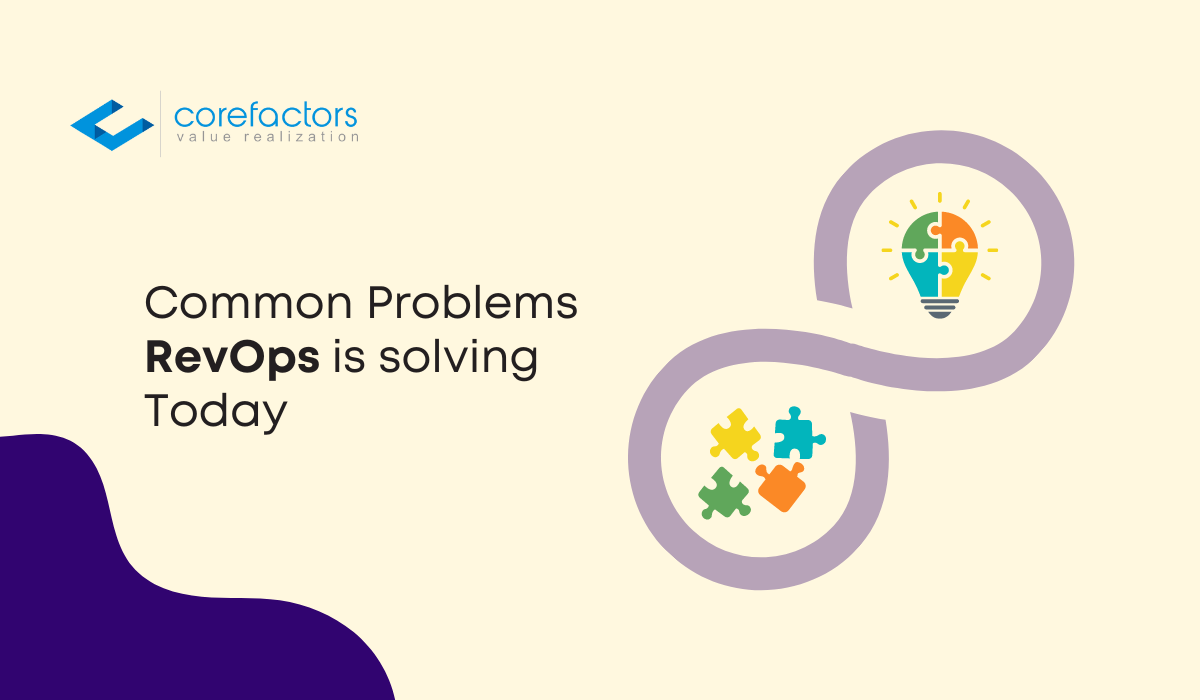
An increasing number of B2B businesses with a go-to-market strategy are implementing a RevOps framework. With implementing RevOps being a strategic focus in their growth journey, what problems are these businesses solving?
From our experience, this focus typically arises when these businesses lack the revenue operations structure and commercial tech stack necessary for scale. A well-designed tech stack is crucial to accelerating an organization’s commercial strategy because it enables efficient processes, reduces friction, and provides a unified view of the customer journey.
RevOps is a multifaceted function that synchronizes the processes, platforms, and personnel within marketing, sales, and customer success. This coordination is vital for promoting revenue growth, though it brings several challenges that organizations must tackle. These challenges generally fall into four main areas: Automation & Scalability, Data Quality, Process Alignment, and Reporting & Decision-Making.
1. Automation & Scalability
CRM – Automations & Validations
Current workflows are not set up in alignment with best practices for the most efficient operation. This inefficiency can lead to missed opportunities, delayed responses, and inconsistent customer experiences. Effective automation can streamline processes, reduce manual errors, and ensure that best practices are followed consistently.
Implementing advanced CRM automation tools can handle routine tasks, freeing up your team to focus on high-value activities and ensuring that customer interactions are timely and efficient.
Integrations with CRM
Other systems are not integrated well with the CRM and are not sharing data consistently. A siloed tech stack can result in fragmented customer views and disjointed processes. Seamless integration and a unified tech stack ensures that all relevant data is centralized, enabling more informed decision-making and a cohesive customer experience.
Integrating marketing automation, sales tools, and customer service platforms with your CRM can provide a 360-degree view of the customer journey.
Offline Sources
Non-CRM systems and sources are used to operate core commercial processes. Relying on offline sources can lead to data discrepancies and inefficiencies.
Centralizing all operations within a robust CRM system can enhance data accuracy and operational efficiency. Moving away from spreadsheets and manual record-keeping to a fully integrated CRM ensures that data is up-to-date, accessible, and actionable.
2. Data Quality
Data Clean-Up
The quality of the dataset in the CRM and the underlying architecture used to store and manage the data requires clean-up. Poor data quality can undermine decision-making and strategic initiatives.
Regular data audits and clean-up processes are essential to maintain data integrity. Implementing data validation rules, duplicate detection, and routine data cleansing can significantly improve the quality of your CRM data.
Attribution: Origination, Tracking & Attribution
There is a lack of ability to tie revenue back to its origination and activities prior to revenue creation. Accurate attribution is crucial for understanding which activities drive revenue and for optimizing marketing and sales strategies.
Implementing robust tracking mechanisms and using tools like UTM parameters and attribution models can enhance visibility into the revenue generation process, helping to optimize marketing and sales strategies.
3. Process Alignment
Customer Lifecycle
The commercial team is misaligned across the customer lifecycle. Misalignment can lead to inconsistent customer experiences and lost opportunities.
Aligning processes and ensuring that all teams are working towards common goals can enhance customer satisfaction and revenue growth. Establish a unified customer journey map and ensuring that marketing, sales, and customer success teams are aligned on this journey
Pipeline Building
Poor sales process and pipeline tracking can hinder growth. Effective pipeline management is essential for forecasting revenue and managing sales performance.
Implementing standardized sales processes and robust pipeline tracking tools can improve accuracy and efficiency. Using RevOps-enabling CRM tools to manage and visualize the sales pipeline helps in forecasting revenue and managing sales performance effectively.
CPQ & Billing
The quote-to-revenue or cash process requires optimization. Inefficient CPQ (Configure, Price, Quote) and billing processes can lead to delays and errors.
Streamlining these processes can enhance customer satisfaction and revenue recognition. Automating these processes ensures accuracy in pricing, faster quote generation, and timely billing.
4. Reporting & Decision-Making
Analytics
Key business metrics are not clearly defined or measurable. Without clear metrics, it is difficult to gauge performance and make informed decisions.
Defining and tracking key performance indicators (KPIs) can provide valuable insights and drive strategic initiatives. Using advanced analytics tools can help in measuring performance against set metrics and making data-driven decisions.
Revenue Intelligence
The ability to use the CRM for data-driven decisions is limited. Advanced analytics and revenue intelligence tools can unlock the potential of CRM data, providing deeper insights into customer behavior and sales performance.
Leveraging AI and machine learning can further enhance these insights, predicting trends and identifying opportunities for growth.
Forecasting
Lack of consistency and accuracy in the current forecasting methodology can lead to misguided decisions. Accurate forecasting is essential for strategic planning and resource allocation.
Implementing robust forecasting models and regularly reviewing them can enhance accuracy and reliability, ensuring that businesses are prepared for future demands.
Addressing the Challenges with a Holistic RevOps Approach
Addressing these challenges requires a holistic RevOps approach while leveraging expertise in building tech-enabled processes across the entire customer lifecycle.
It is crucial to be clear of the end goal and have a vision of the desired end state for the organization. This vision will guide the prioritization and implementation of solutions.
Step 1: Identify and Prioritize Challenges
The first step is to uncover the major challenges, key priorities, and blockers to change within the organization. This involves conducting a thorough assessment of current processes, data quality, technology stack, and team alignment. Engaging with stakeholders across departments can provide valuable insights into pain points and areas for improvement.
Step 2: Design and Implement Solutions
Once the challenges are identified, the next step is to design and implement solutions to overcome them. This often involves a combination of technology upgrades, process reengineering, and team training. It is essential to prioritize solutions based on their potential impact and feasibility. Quick wins can build momentum and demonstrate the value of the RevOps function.
Step 3: Continuously Monitor and Optimize
RevOps is not a one-time project but an ongoing process of continuous improvement. Regularly monitoring key metrics, gathering feedback from stakeholders, and adjusting strategies as needed are essential for sustaining improvements and adapting to changing business needs.
Conclusion
RevOps plays a critical role in driving revenue growth and operational efficiency in B2B SaaS businesses. By addressing common challenges related to automation, data quality, process alignment, and reporting, organizations can enhance their go-to-market strategies and achieve sustainable growth.
If you’re facing similar challenges, sharing your experiences with the RevOps community can provide valuable insights and support. Whether you’re dealing with the issues outlined here or encountering other obstacles, the collective knowledge and expertise of the RevOps community can help you navigate the complexities of revenue operations.











